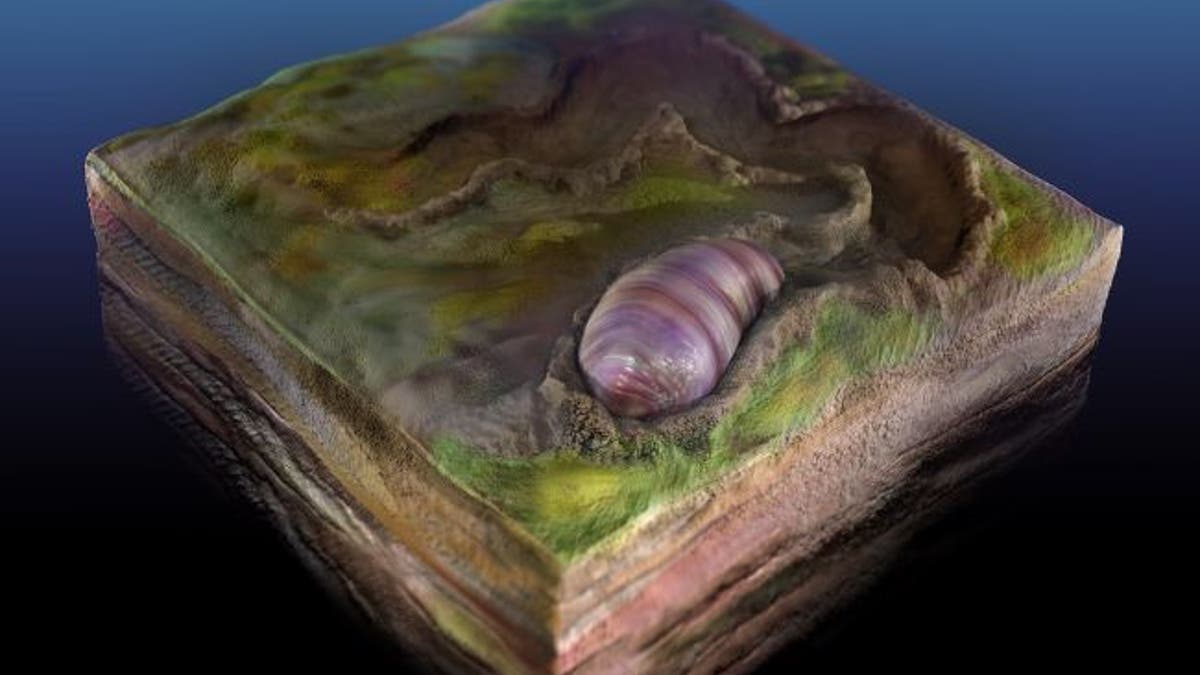
An artist's rendering of Ikaria wariootia and its 555-million-year-old burrow. (Credit: Sohail Wasif/UCR)
Humans, it's been said, are like donuts. They have an opening at each end, and a single continuous hole running through their middle. (Note: This theory has yet to appear in a peer-reviewed journal.)
It's a crude simplification of our species, sure, but look far enough back on the animal family tree and you'll find an ancestor organism that's little more than a digestive tract with some meat wrapped around it. Limbless and hungry like a sentient macaroni, this ancient creepy-crawler was the first bilaterian — an organism with two symmetrical sides, a distinct front and back end, and a continuous gut connecting them.
While bilaterians run rampant today (insects, humans and most other animals among them), the identity of that progenitor organism has long eluded discovery. Now, researchers believe they've found it in the fossil record for the first time.
In a study published March 23 in the journal Proceedings of the National Academy of Sciences, a team of scientists analyzed a chunk of rock containing an ancient undersea burrow found deep below Australia. They found several fossil organisms preserved near the burrows, each creature about the size and shape of a grain of rice and dating to roughly 555 million years ago.
Related: This 500-million-year-old 'social network' may have helped animals clone themselves
The burrows were clearly made by wriggling creatures with distinct front and back sides, but to get a more detailed picture of those ancient burrowers the researchers analyzed the fossils with a 3D laser scanner. They found that the tiny animals not only had a clear head and tail, but also had a bilaterally symmetrical body and faintly grooved musculature, similar to a worm. The researchers named this worm-like creature Ikaria wariootia, and dubbed it the oldest known example of a bilaterian — aka, the oldest shared ancestor of all living animals.
"Burrows of Ikaria occur lower than anything else," study co-author Mary Droser, a professor of geology at University of California, Riverside, said in a statement. "It’s the oldest fossil we get with this type of complexity."
Ikaria wariootia lived during the Ediacaran period (571 million to 539 million years ago), when the first non-microscopic multicellular creatures emerged. At the time, the world was chiefly populated by amorphous undersea blobs (see, for example, the shape-shifting, bottom-feeding rangeomorphs). Most Ediacaran animals died in a mass extinction event, leaving no links to modern animals. Ikaria wariootia, however, is an exception — trace fossils of their burrows persist into the Cambrian period (541 million to 485.4 million years ago), suggesting they survived long enough to evolve bilaterian descendants, the researchers wrote.
In other words, perhaps you can thank this ancient rice-shaped worm for making you into a donut.
- Image gallery: Bizarre Cambrian creature
- Photos: 508 million-year-old bristly worm looked like a kitchen brush
- Photos: Ancient marine critter had 50 legs, 2 large claws
Originally published on Live Science.




















